Lumbosacral Spine
1/21
There's no tags or description
Looks like no tags are added yet.
Name | Mastery | Learn | Test | Matching | Spaced |
|---|
No study sessions yet.
22 Terms
Adams Forward Bending Test
Scoliosis
Pt bends forward to touch their toes. Observe the spine and palpate
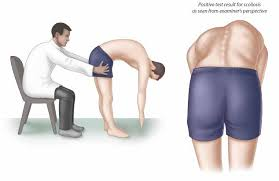
Posterior-Anterior Pressure
Pt lays on stomach. Using the palm/pisiform, push down on each lumbar segment (use ASIS to find L4)
Passive Lumbar Extension Test
Pt lays on stomach. Take both legs and raise them to 30 degrees to extend. Positive if sx’s reproduce
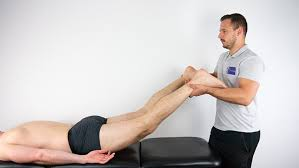
Prone Instability Test
Pt bent over edge of table. Palpate the symptomatic segment. Ask the patient to lift legs up, then feel segment again. Positive if no sx’s with legs raised.
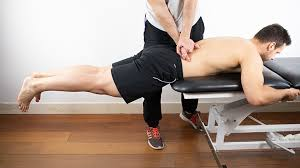
Centralization/Repeated Extension
Radiculopathy
Pt standing and does 5-20 active lumbar extensions to look for improvement of sx’s.
Slump Sit Test
Radiculopathy
Pt sits on edge table. Hands behind back and tell them to sit very slouchy, head forward. Ask to tuck their chin in/head down, and can add some overpressure. Then extend knee and DF ankle.
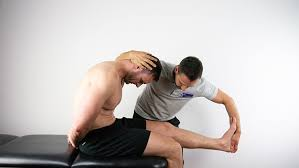
Straight Leg Raise- Sciatic Nerve
Radiculopathy
Pt lays on back. Passively flex hip 30-70 (symptomatic side) while keeping knee extended, and then DF ankle. Positive if pain
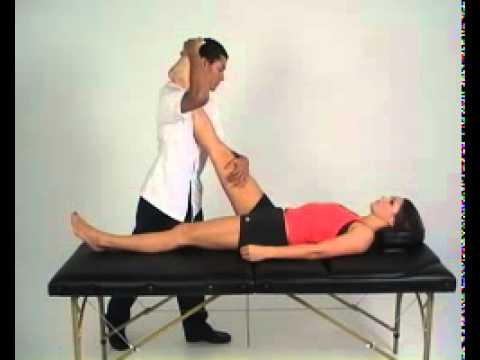
Straight Leg Raise- Tibial Nerve
Radiculopathy
Pt lays on back. Passively flex hip 30-70 (symptomatic side) while keeping knee extended, then DF ankle and great toe extension. Positive if symptoms
Straight Leg Raise- Sural Nerve
Radiculopathy
Pt lays on back. Passively flex hip 30-70 (symptomatic side) while keeping knee extended, DF foot and inversion. Positive if pain reproduced.
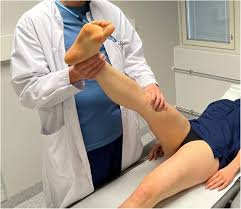
Straight Leg Raise- Common Peroneal Nerve
Radiculopathy
Pt lays on back. Passively flex hip 30-70 (symptomatic side) while keeping knee extended, ankle PF and inversion. Positive if pain reproduced.
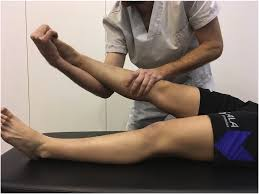
Crossed Straight Leg Raise (Well Leg)
Radiculopathy
Straight leg raise on the side that’s not involved. Positive if pain on opposite side.
Bowstring Test (sciatic nerve)
Radiculopathy
Do passive straight leg raise to symptom provocation, then bend knee and apply pressure into the popliteal fossa. Positive if pain reproduced.
Prone Knee Bending Test
Radiculopathy
Pt on stomach. Stabilized pelvis with forearm. Knee bend (leg side of sxs).
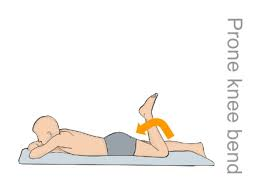
Fortin Finger Test
Sacroiliac Joint
Ask the patient where the pain is, they point finger just below PSIS
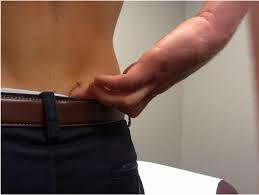
Anterior SI Stress Test Distraction Test
Sacroiliac Joint
Pt lay on back. Cross arms with hands on both ASIS. Then push away creating a distraction. (Creates anterior gapping and posterior compression). Positive if reproduced sx’s.
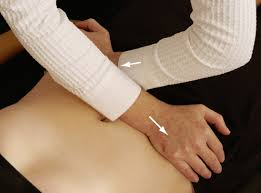
Posterior SI Distraction Test (Posterior gapping and anterior compression)
Sacroiliac Joint
Pt side lying facing away. Compress down on ASIS to push to the other. (Creates posterior gapping and posterior compression). Positive if reproduced sx’s.
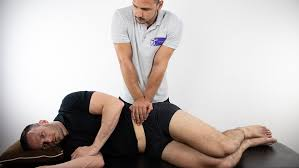
Thigh Thrust Test
Sacroiliac Joint
Pt on back. Log roll them towards you, putting your hand through their legs (crotch area) and reach hand up to sacroiliac joint. With knee still up and pt rolled back down, push down on knee to add compression into back.

FABER test
Sacroiliac Joint
Pt on back. Passively flex, ABD, and ER hip into a “figure 4” shape. Stabilize opposite hip and push down on bent knee.
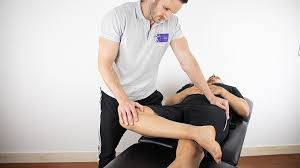
Gaenslen Test
Sacroiliac Joint
Pt prone, close to edge of table. Abduct leg off the table, and bring other knee close to the patients chest. Holding knee up, push down on the femur for a compression force.
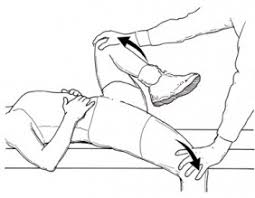
Sacral Thrust
Sacroiliac Joint
Find PSIS then go medially. Perform springing PA glide.
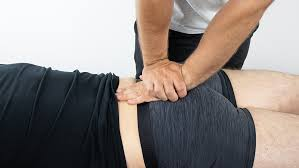
SI Cluster (Laslett’s Cluster)
Thigh thrust, SI distraction, sacral thrust, SI compression
Hoover Test
Malingering
Pt on back. Stand by their feet and cup hands under their heels. Ask them to actively do SLR then back down into your hands. Positive if no pressure on hand from opposite leg.
